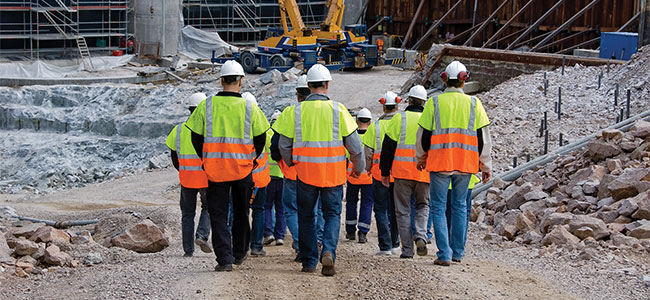
Lessons from Construction Safety’s Constant Change
Managing uncertainty is a given in construction—safety professionals everywhere should take note.
In construction safety, one thing is certain: there’s a lot of uncertainty. Every worksite presents a constantly evolving array of hazards, which means the risk of injury is constantly fluctuating, and there’s rarely enough time or logistical ability to conduct more than the mandatory baseline safety training.
Every single industry has to contend with real-time shifts in risk, but construction companies have to deal with the problem on an entirely different level. For them, change isn’t just one of many safety challenges—it is, in many ways, the safety challenge.
A year ago, in an OH&S column about the changing nature of construction employment trends, I noted that even “the wake of the construction industry’s turbulent employee turnover patterns” can lead to notable safety concerns. That’s just as true today.
If change is the only constant, then construction sites require safety interventions that do double or even triple duty, ones that can nudge workers to be more attentive to their personal safety no matter what tool they’re using or piece of equipment they’re operating. The level of variability in construction obviously requires attention to OSHA requirements, hierarchy of controls and building strong systems. What makes these and other construction safety interventions more resilient to change? There are three major hallmarks of an intervention’s ability to ride the fluctuating waves of risk. And while they’re most applicable to construction sites, these types of interventions are more likely to have staying power in almost any industry.
Flexibility
The work that construction employees are tasked with can change from day to day. Sometimes, from hour to hour. And every task has its own dangers that require different methods of mitigation. The most essential safety skills on a construction site are ones that are flexible, in that they apply to many different situations.
Forklift certification is valuable, but only when workers are using a forklift. Contrast that with a more flexible safety skill such as the ability to recognize human factors like rushing and then respond accordingly. In this case, the worker is more likely to operate a forklift at safe speeds. And then, a few hours later, the worker is less likely to multi-task, take a safety shortcut or hurry while using power tools.
Flexible safety skills tend to fall into two categories: personal awareness and habits. Personal awareness is the ability to recognize what’s going on around you, as well as your own mental and physical states. In any given situation, it’s incredibly useful to be able to understand how these affect individual safety outcomes.
Meanwhile, habits can apply in any situation that either occurs frequently or has some sort of cue that will trigger the habit. Think of the folks who most reliably wear PPE on the job. They’ve likely made it a flexible habit that kicks in no matter what specific task is at hand.
Perception
I recently helped conduct a survey on hand safety that asked respondents for the most common reasons that workers give for not wearing protective gloves when required by policy. The three most common responses were “Forgot them,” “Didn’t think they needed them (low risk perception)” and “Poor habits.” We’ve already seen how habits can play a factor in flexibility, and habits are also a major way to compensate for forgetting.
Risk perception can also play a role in forgetting and in several other safety issues too. It’s a lot easier to forget or disregard crucial safety equipment and procedures when the perceived risk is low. Because risk ebbs and flows like the tide, it’s important for workers to have a decent sense of what their risk levels are in the present moment — not an hour or two ago, not later in their shift but right now.
One of the most trustworthy tools in building a change-resilient safety program is encouraging more accurate risk perception among workers. Some of this can come through training, as there are several workplace safety programs that offer practical education on risk perception. But a lot of it comes from organizational systems and support. This includes standard-fare options such as hazard analyses and toolbox talks, as well as more tailored one-on-one conversations.
Safety Climate and Culture
At its core, safety culture is the way things are done on the worksite. It’s the habits and norms that influence individual and group behavior. Culture’s younger cousin, safety climate, is the way that safety culture mixes with temporary conditions, like stress or other human factors, to affect how work is done today. If workers are frustrated because several people called in sick, and now everyone is going to have to work harder to compensate, that’s going to create an adverse safety climate that will influence the chances of an incident occurring on the job.
Safety climate works the other way too. Think of a crew leader who holds a tailgate meeting that quells existing frustrations and who then spends the day keeping workers oriented towards fluctuating risks in the work environment. That’s likely to establish a positive safety climate, resulting in a safer workplace for the day no matter what task workers are doing in any given moment.
The three elements I’ve outlined here have a few things in common. They apply in most situations. They improve people’s ability to take care of themselves. And they can be fostered with formal training and informal communications from frontline supervisors. In fact, they’re so universal that safety managers at non-construction businesses can use them to keep their people safer in any situation no matter what degree of uncertainty they face.
This article originally appeared in the February/March 2024 issue of Occupational Health & Safety.